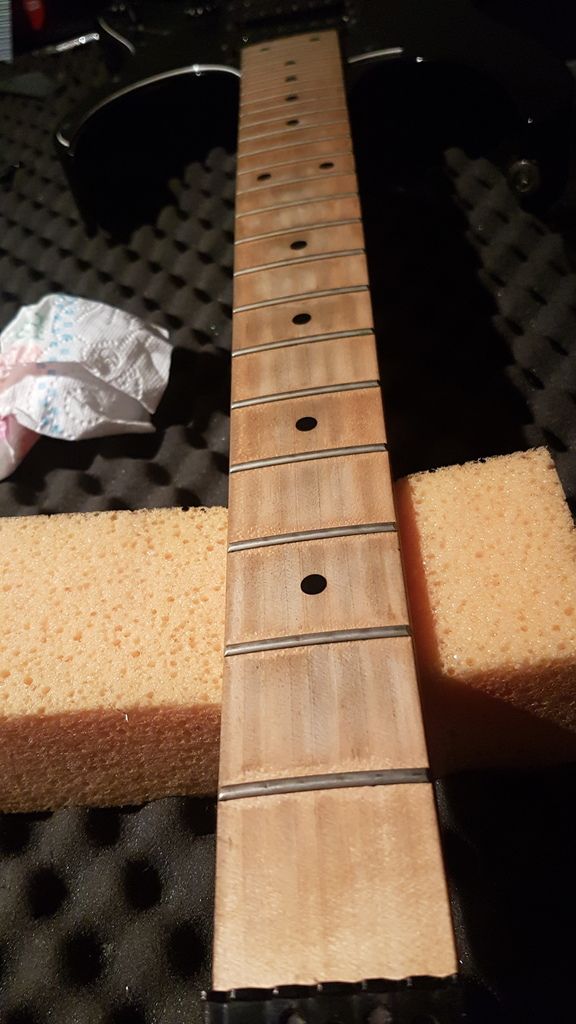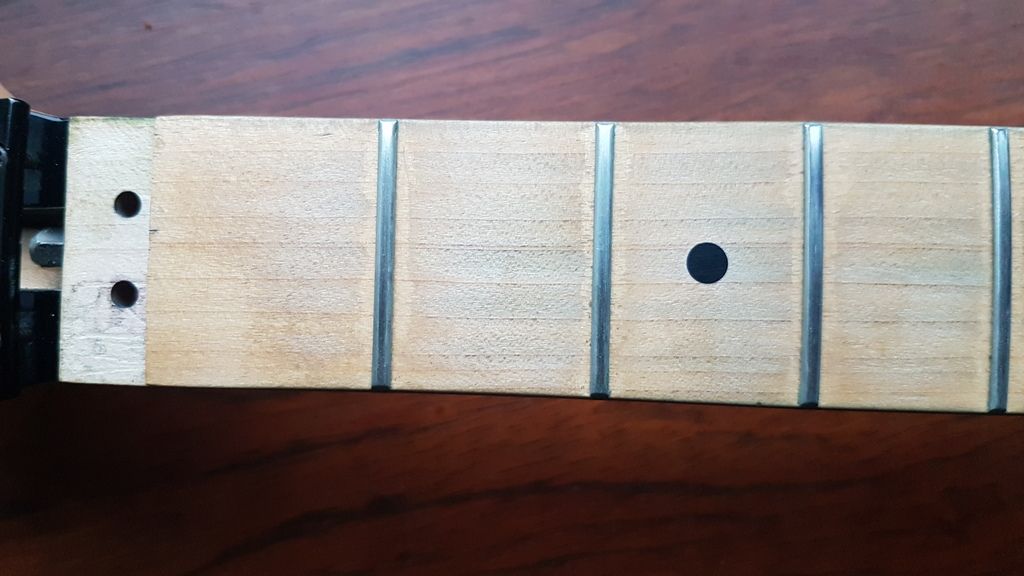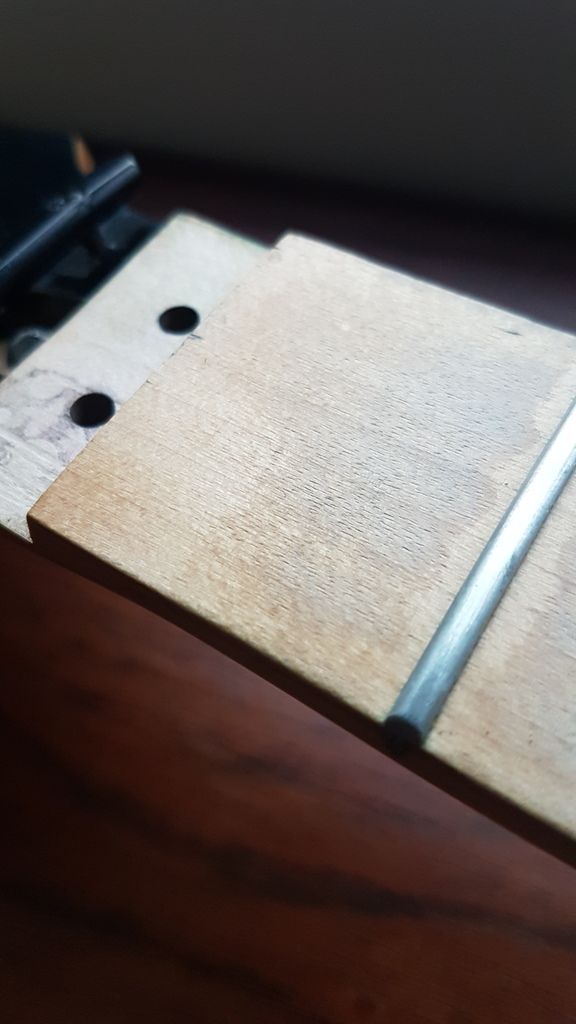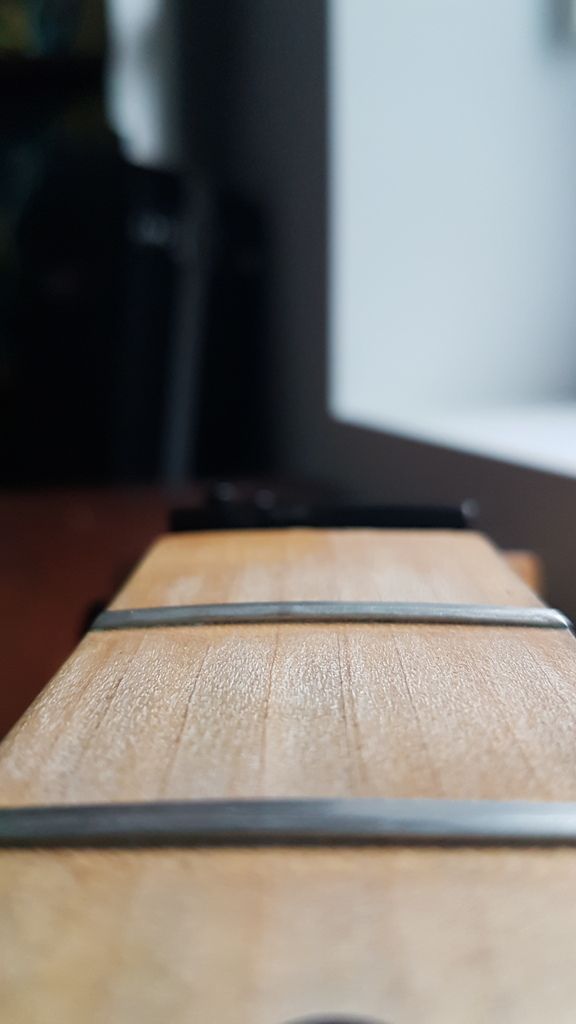Hi, I just got myself a 89 RG550 which has quite some cleaning work most original finish was gone on the fretboard. Read through a lot of threads about cleaning but the same question remains in the end: How to remove the deep gray grime that is stuck inside the wood?
I did a lot of passes with an electric toothbrush and grease remover (yellow brown gunk came off), 0000 steel whool, carefull 800 sanding (also to remove 'waves' in the fretboard) but can't get any further. Napta has like 0 effect (I just apply a bit on a cotton rag, I don't dare to apply it straight on the wood...)
The next step would be Tung oil, but I worry to lock in remaining dirt and have ghosting.
Or is they gray-ish color the original maple color... not sure were to go from here.
What do you think? Below some progress pictures. Thx !
How it looks now:

Views: 858
Replies to This Discussion
-
While not pristine, it certainly looks fine as-is. One thing that might be helpful to keep in mind (regarding the 'trapped' material) is that the neck will need a refret someday and that would give you the perfect opportunity to strip the board as clean as you'd like before refretting.
Once the board is sanded & cleaned, you could shoot a single quick lacquer coat before fretting, just to keep the wood nice & clean while refretting. The normal schedule for a maple neck would call for the finish to be applied after fretting, since the fret dressing will take the finish off the frets.
That aside, it looks perfectly acceptable as it sits.
-
I suspect it is oxidation of the wood turning it grey-ish. you might try some wood bleach in a small area, when done it will have lightened the wood enough that you will need to recolor/stain the maple back to what you want. I should say that I have never done this on any guitars that I have repaired, so be careful.
-
Thanks for the swift reply's, greatly appreciated ;)
Mike: The neck has plenty of fret left. I don't think it was ever dressed. I had to remove to dents and local wear, but now after dressing 1.35mm left on average, so a refret is not going to happen any time soon. It look quite ok I have to agree, but I'm afraid of the effect oils will have and make at more appareant, and then locked underneath.
Ron: some have adviced met Clorox sticks to remove the gray. I suspect it is bleach based so I should indeed be carefull. I'd prefer a lighter stain compared to a gray grim stain though ;)
-
Hi SB,
We often dress fingerboards that have divots, unevenness and general roughness by lightly shaving the surface with a mini scraper (generally a Stanley knife blade), back and forth, paying attention to the grain orientation and getting a clean start to the stroke very close to the edge of the fret. Normally roll the fingerboard edge while we are doing this and then go over everything with a conformal sanding stick (220/320 grit backwards and forward, not across grain) and then scrub everything with 0000 steel wool.
Use the "Swedish Method" - same number of stokes, pressure and alternating orientation and and let the fingerboard radius guide the scraper.
This will physically clean the surface and give you a consistent and "new" surface to apply whatever finish you wish. If you are going to use tung or linseed I suggest you thin the initial coats 50/50 with citrus terpene or some other similar bio-thinner so as to get good initial penetration upon which to build following less diluted applications. Hard hand buff with cotton terry towel seems to work well.
My personal preference with "finger-marked stained and worn" maple necks is to just clean em up and let the historical coloration be a tribute to the playing patterns of all those that have played the instrument before. Let the history shine through sort of thing.
Now, finally, in the fine wood working sphere of cabinetmaking dilute oxalic acid is sometimes used to remove greyness and oxidation from undamaged wood however, in this situation such a process maybe fraught with danger.
Regards,
Rusty.
-
Thanks for the ellaborate reply! ;) Learning here.
Bleach solutions ... I'll have to be very carefull with that. Have you ever tried clorox sticks by any chance?
-
after some research, I'd go for birchwood casey tru oil.
-
Oxalic Acid is best suited for removing mineral stains like rust when the wood is in contact with steel, not so good for oil and grim left from fingers. De-ionized water may help get a bit more cleaned out than what you have already done but you'll likely not get rid of the shadows without sanding. I would avoid any bleach solution, you run the risk of lightening the clean Maple and making the dark areas show up worse.
-
hmmm, thx, valid point! I might test it on another piece of wood to see how it reacts.
-
My personal opinion is that a used guitar can/should look used. From the pictures, it seems to me that the gray will pretty much disappear when strings are installed anyway. It's sort of like looking at an incomplete painting with only the background painted. When picture is complete, the background won't be as much of a focus.
As my dad used to say; "A man on a fast horse won't see it."
-
Lol! fat horse ;)
yes you are right. I'm with my nose on the details and might overlook it. a 'naked' fretboard reviels a lot more than a stringed one, with the strings casting shadows etc. For some reason I'm freaky over this one, always had that with rg's and jems. can't stand damage on these models ;)
© 2026 Created by Frank Ford.
Powered by
![]()






